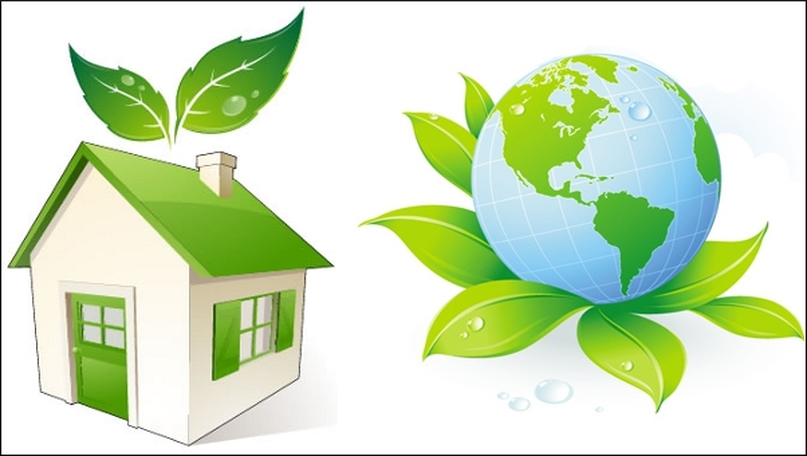You can have an eco-friendly home without building one from the ground up. From switching to LED light bulbs to installing a toilet that wastes less water, there are a number of ways to make your home a little greener.
Light bulbs & Windows
Using LED light bulbs is the easiest thing to do that will change your electric bill. You can go to your local Home Depot or Lowe's and find a plethora of LED bulbs that will help save on your energy usage.
Changing to high-performance windows are crucial to having a comfortable home.
High-performance, energy-efficient windows can offer you:
- Quieter home interior — multiple panes and insulated frames block outside noise.
- Reduced fading of curtains, furniture, and flooring — low-emissivity (solar window) coatings can block up to 98% of UV rays.
- Reduced utility bills — houses lose less heat in winter and absorb less heat in summer.
- Improved quality windows are made from better-quality materials easier to operate and carry extended warranties.
You may also want to rethink your current heating and cooling system. The Dwell Development team suggests using ductless mini-split systems throughout a home. You can mount them right on your wall, and they’re run by a remote control.
These ductless heating and cooling systems are 300 percent more efficient than most systems out there. Other benefits to ductless mini-split systems include their small size, easy installation, and ability to blend into the existing interior design of a room. These systems will soon become the new norm.
Re-purposed materials
Try re-purposing old materials and turning them into treasured statement pieces in your home. From counter-tops to flooring, look locally for materials you can re-purpose.
If you’re thinking about replacing your counter-tops, try recycled steel or reclaimed wood. Bamboo wood, for example, works quite well as a kitchen counter-top option; it’s both durable and resistant to bacteria and mold.
Environmentally friendly flooring options are also not difficult to find. Flooring made from cork, linoleum, and bamboo are not only renewable materials, but also assist in home insulation efforts. Linoleum, in particular, is known for its lengthy lifespan.
Water conservation
Selecting the right fixtures can save thousands of gallons of water a year. An average toilet uses three gallons per flush. For an average three-bedroom house, you’ll save 6,000 to 9,000 gallons annually by using these toilets.
In addition to easy fixes like new toilets, look for other fixtures and appliances that conserve water. Purchasing tankless water heaters is another good place to start. Tankless water heaters skip the inefficient (and wasteful) process of reheating hot water in a tank. Instead, they heat on-demand, so no energy is wasted keeping water hot.
You’ll save money on operating costs, and save on water usage given you’re no longer running water while waiting for it to heat up.
Additionally, you can collect and re-purpose rainwater on your property to irrigate your garden and landscaping. Place rain barrels or cisterns beneath your downspout, and install rain chains, which drain water from your gutter and hang from the downspout hole.
From rethinking your heating and cooling system to water conservation efforts, the key to turning your home into a more environmentally conscious space is making one change at a time.
You don’t need to build a green home from the ground up to incorporate sustainable home practices. Choose a few small changes you can enact in the near future, and you’re well on your way to a green-living home of your own.





 RSS Feed
RSS Feed
















